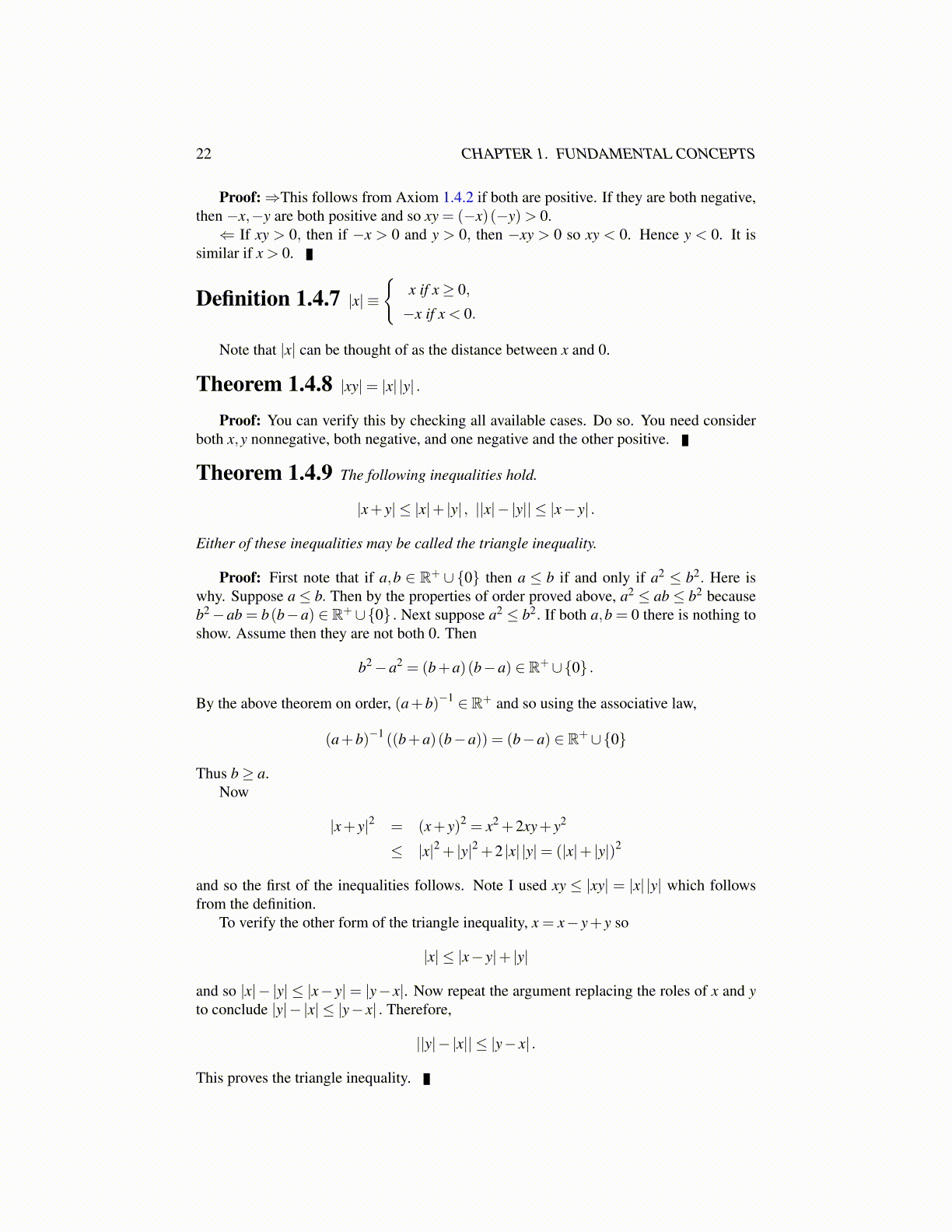
22 CHAPTER 1. FUNDAMENTAL CONCEPTS
Proof: ⇒This follows from Axiom 1.4.2 if both are positive. If they are both negative,then −x,−y are both positive and so xy = (−x)(−y)> 0.
⇐ If xy > 0, then if −x > 0 and y > 0, then −xy > 0 so xy < 0. Hence y < 0. It issimilar if x > 0.
Definition 1.4.7 |x| ≡
{x if x ≥ 0,
−x if x < 0.
Note that |x| can be thought of as the distance between x and 0.
Theorem 1.4.8 |xy|= |x| |y| .
Proof: You can verify this by checking all available cases. Do so. You need considerboth x,y nonnegative, both negative, and one negative and the other positive.
Theorem 1.4.9 The following inequalities hold.
|x+ y| ≤ |x|+ |y| , ||x|− |y|| ≤ |x− y| .
Either of these inequalities may be called the triangle inequality.
Proof: First note that if a,b ∈ R+ ∪ {0} then a ≤ b if and only if a2 ≤ b2. Here iswhy. Suppose a ≤ b. Then by the properties of order proved above, a2 ≤ ab ≤ b2 becauseb2 −ab = b(b−a) ∈ R+∪{0} . Next suppose a2 ≤ b2. If both a,b = 0 there is nothing toshow. Assume then they are not both 0. Then
b2 −a2 = (b+a)(b−a) ∈ R+∪{0} .
By the above theorem on order, (a+b)−1 ∈ R+ and so using the associative law,
(a+b)−1 ((b+a)(b−a)) = (b−a) ∈ R+∪{0}
Thus b ≥ a.Now
|x+ y|2 = (x+ y)2 = x2 +2xy+ y2
≤ |x|2 + |y|2 +2 |x| |y|= (|x|+ |y|)2
and so the first of the inequalities follows. Note I used xy ≤ |xy| = |x| |y| which followsfrom the definition.
To verify the other form of the triangle inequality, x = x− y+ y so
|x| ≤ |x− y|+ |y|
and so |x|− |y| ≤ |x− y|= |y− x|. Now repeat the argument replacing the roles of x and yto conclude |y|− |x| ≤ |y− x| . Therefore,
||y|− |x|| ≤ |y− x| .
This proves the triangle inequality.